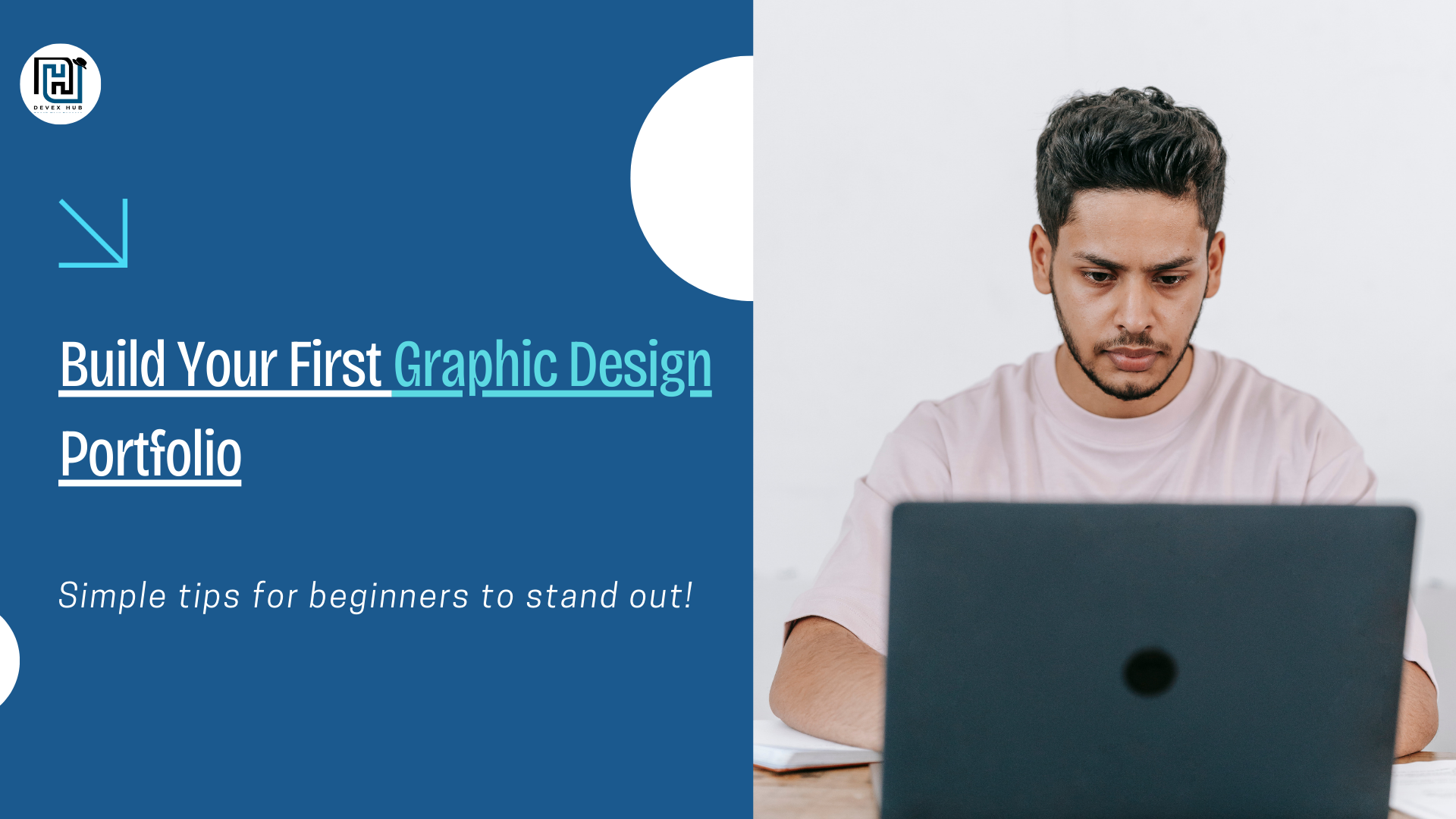Portfolio Tips for Beginner Graphic Designers: How to Impress Clients & Employers

If you’ve recently started learning graphic design or joined a graphic designing course, one big question in your mind is probably:
“How can I make a design portfolio when I haven’t worked with any real clients yet?”
Worried you don’t have any client work yet? That’s completely fine. Even if you're just starting out, it's possible to build a portfolio that clearly shows your talent and design ideas. Whether you’re still learning or just finished your training, this guide will show you how to create a portfolio that shows your creativity, skills, and potential.
Let’s break it down in simple steps.
What Makes a Good Graphic Design Portfolio?
Your portfolio is your visual resume. It shows people what you can do without saying a word. A good beginner portfolio should:
- Be clean and easy to browse
- Show different types of design work (like logos, posters, social media posts, etc.)
- Tell a short story behind each project – what it is, why you made it, and how
You don’t need to show off big brands. You just need to show how you think and design.
What to Include in Your Portfolio (Even Without Clients)
No clients? No problem. Here’s what you can include instead:
✔️ Practice Projects
Create fake projects for:
- A new coffee shop (logo, menu design, branding)
- A mobile app (UI screens or home page)
- A travel company’s Instagram posts
These projects help you show your style and creativity.
✔️ Redesign Real Brands
Pick a popular brand and redesign their ad, logo, or social media post your way.
Example: Redesign a McDonald's menu card or a Netflix app screen.
✔️ Course Assignments
If you’ve joined a graphic designing course, you already have some design work. Choose your best assignments, clean them up, and present them well.
✔️ Personal or Passion Projects
Are you into music, sports, or movies? Design posters or social media posts related to your interest. Passion work shows your creative spark.
Tools to Create and Share Your Portfolio
You don’t need to be a tech expert to get started with your first portfolio. Start with beginner-friendly tools:
[1]. Design Tools
- Canva (easy to use)
- Adobe Photoshop & Illustrator (industry standard)
- Figma (great for UI/UX projects)
[2]. Portfolio Platforms
- Behance – Best for students and beginners
- Dribbble – Popular among designers
- Wix, Carrd, or Adobe Portfolio – Platforms like Wix, Carrd, or Adobe Portfolio can help you build a simple personal website to display your work.
- PDF Portfolio – A simple offline option
If you're currently taking a graphic designing course, consider reaching out to your instructor for guidance on setting up your Behance profile or a simple website.
How to Present Your Work Professionally
The way you show your designs matters just as much as the designs themselves.
Follow these tips:
- Use high-quality images or mockups to display your design
- Include a brief title and explanation for each project to give context.
- Mention the tools you used (like Photoshop, Illustrator, etc.)
- If possible, show your design process (idea > sketch > final design)
Presentation makes a big difference, especially when you’re just starting out.
Common Mistakes to Avoid
Many beginners make the same errors. Avoid these:
- Adding too many designs — show 5 to 8 best projects only
- No explanation — always add a short note for each design
- Bad image quality — use proper sizes and clean mockups
- Messy layout — keep your portfolio clean and simple
Keep Updating as You Learn
Your first portfolio is just the start. As you continue learning through your graphic designing course, keep updating and refining your portfolio:
- Add your new designs every 2–3 months
- Replace old work with better work
- Ask for feedback from mentors or seniors
Growth shows. And clients love to see that.
Final Thoughts
It’s completely okay if you haven’t worked with any clients yet. Every great designer started where you are today. Your focus right now should be on learning, practicing, and showing your creativity in the best way possible.
If you’re still learning or planning to join a graphic designing course, remember that the work you do there can become the base of your first portfolio.
Start with what you have, use what you learn, and keep going. You’ll be surprised how far a well-made beginner portfolio can take you.